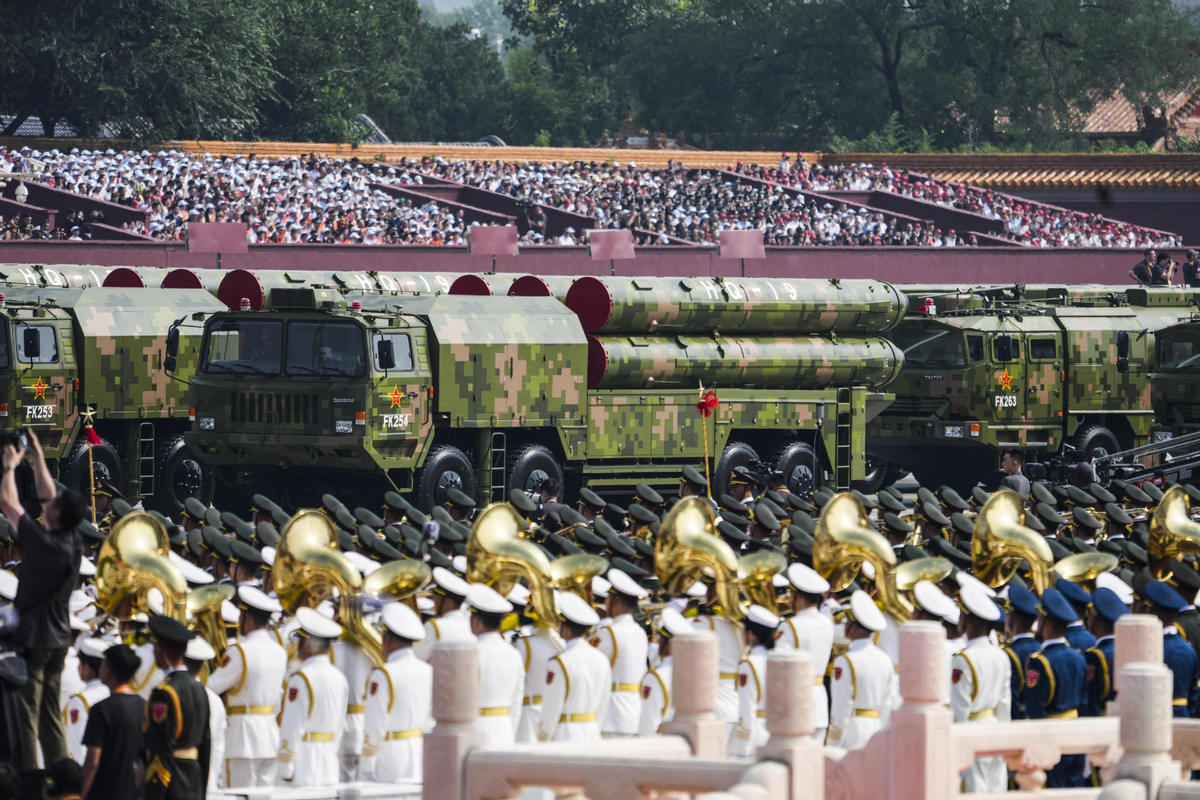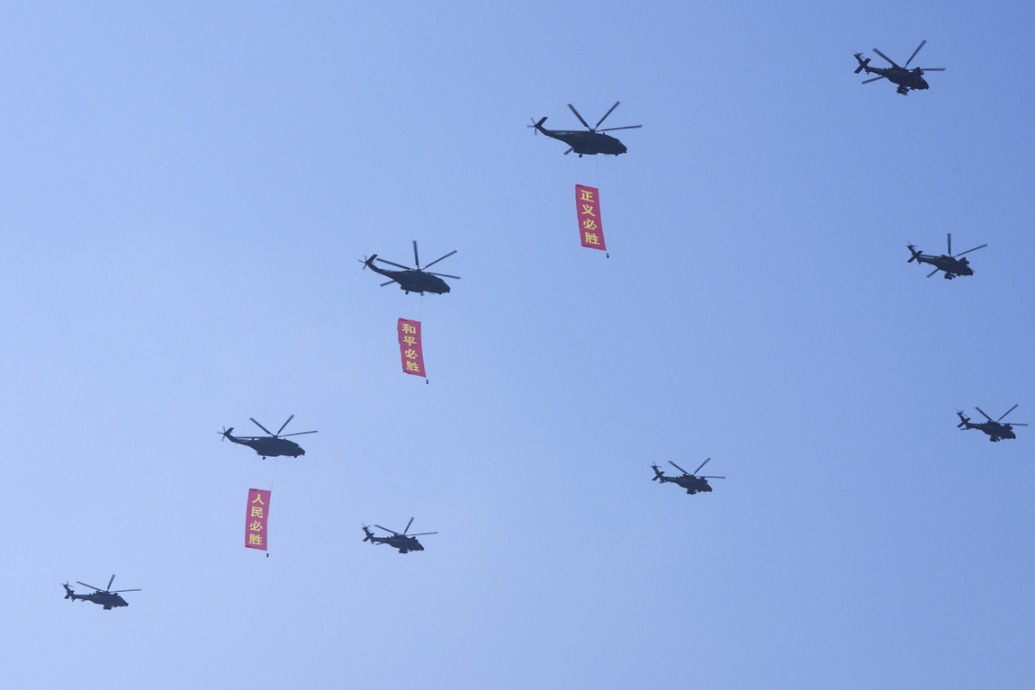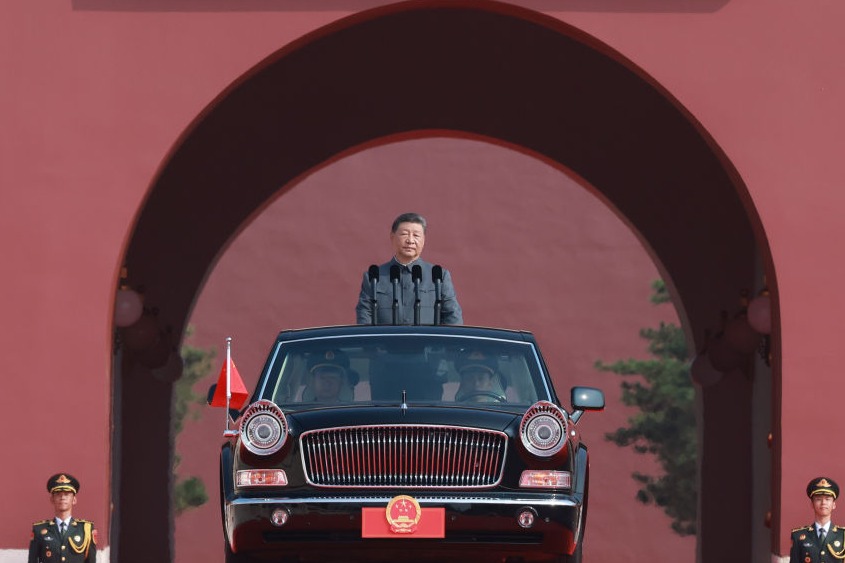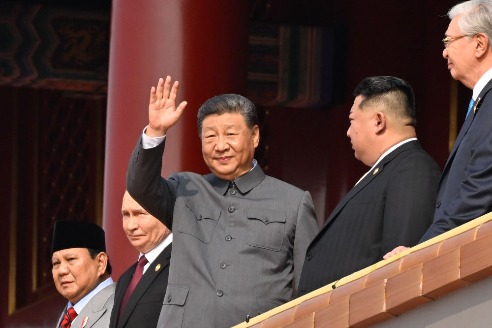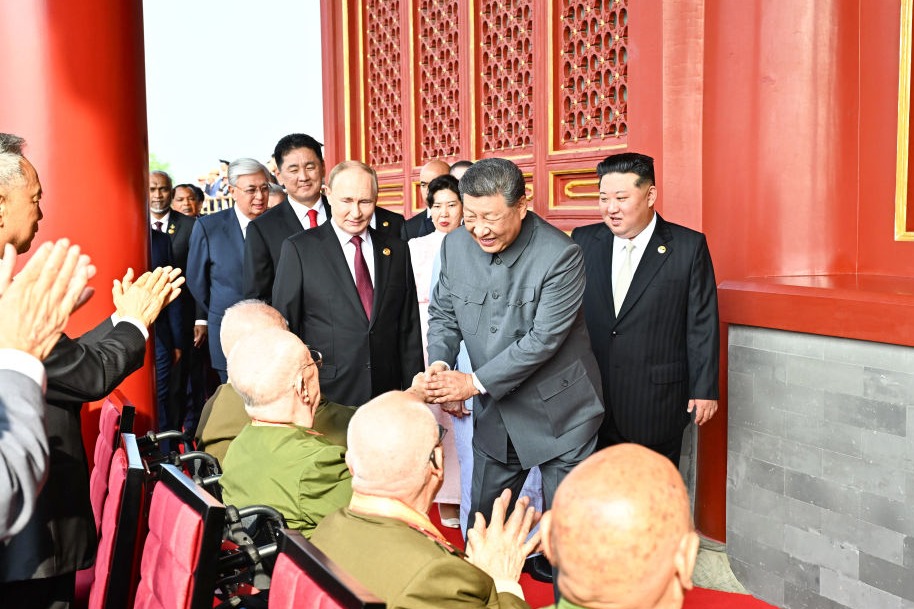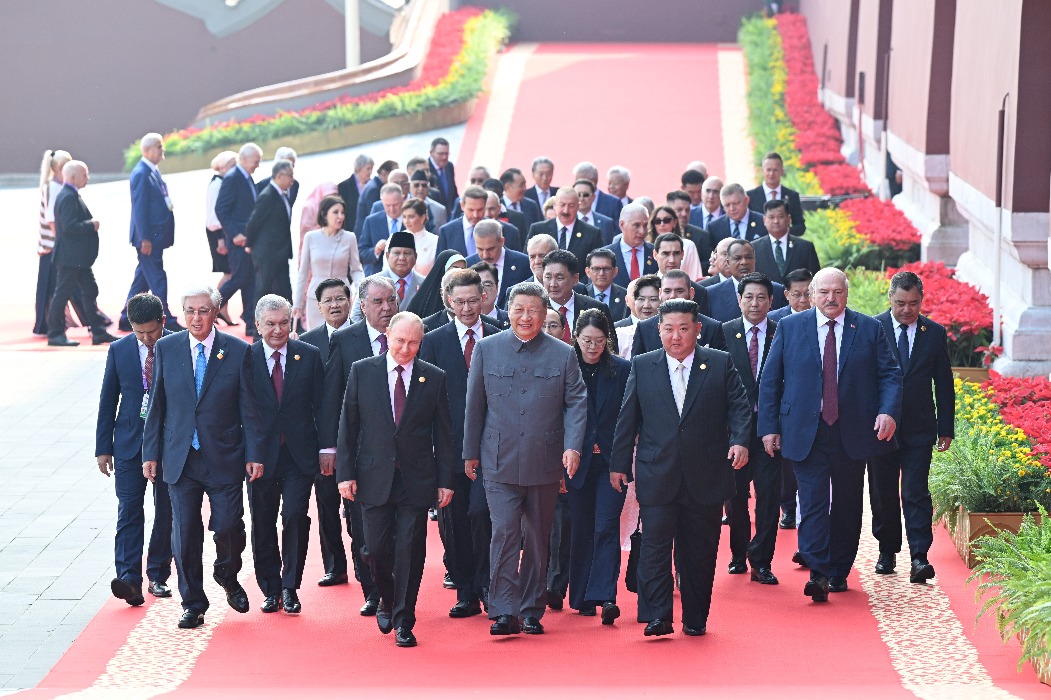Ground-based air-defense and anti-ballistic missile systems shine at V-Day parade

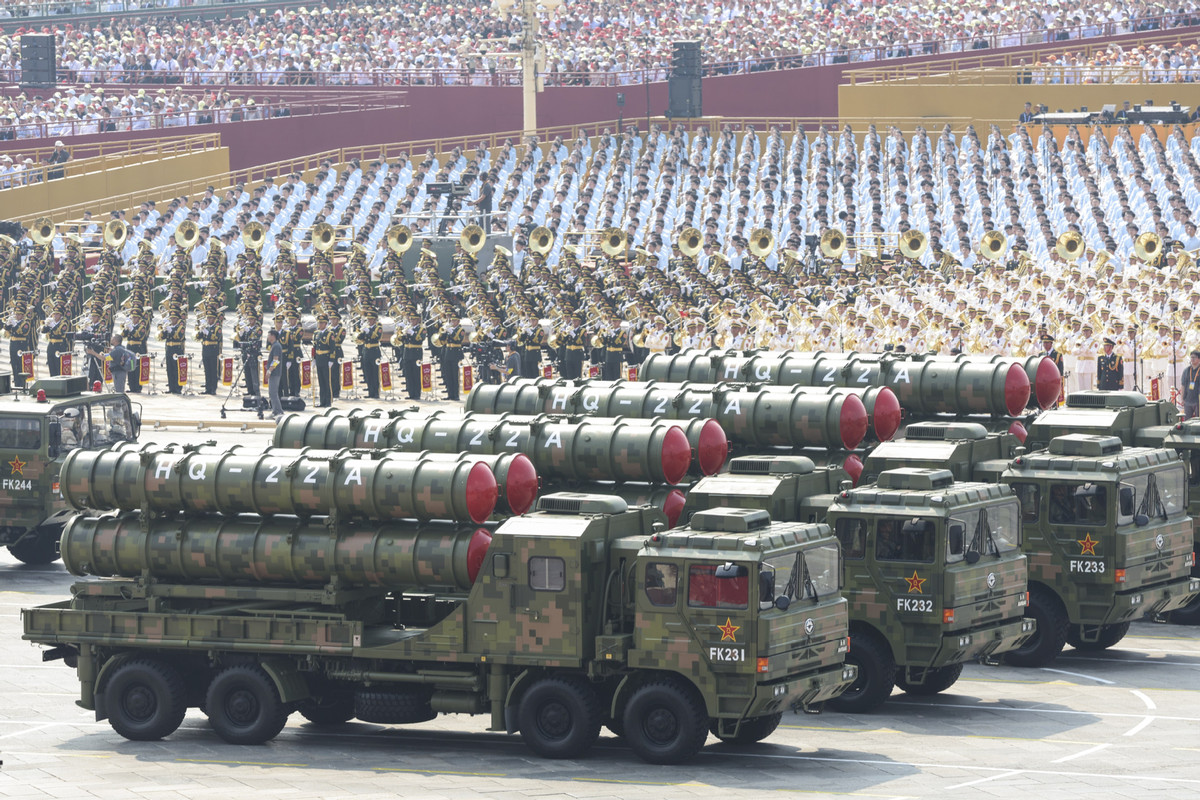
The responsibility of safeguarding China's airspace is not placed solely on combat aircraft. Ground-based air-defense and anti-ballistic missile systems are another significant component in defending against incoming air threats.
To display its multi-stage, multi-layer air and missile defense network, the Air Force brought six types of advanced systems to the parade.
The occasion marked the public debut of the HQ-20 and HQ-22A anti-aircraft missile systems and the HQ-29 exoatmospheric missile interception system. Another three types — HQ-11, HQ-9C and HQ-19 — have been part of Chinese defense shows in recent years.
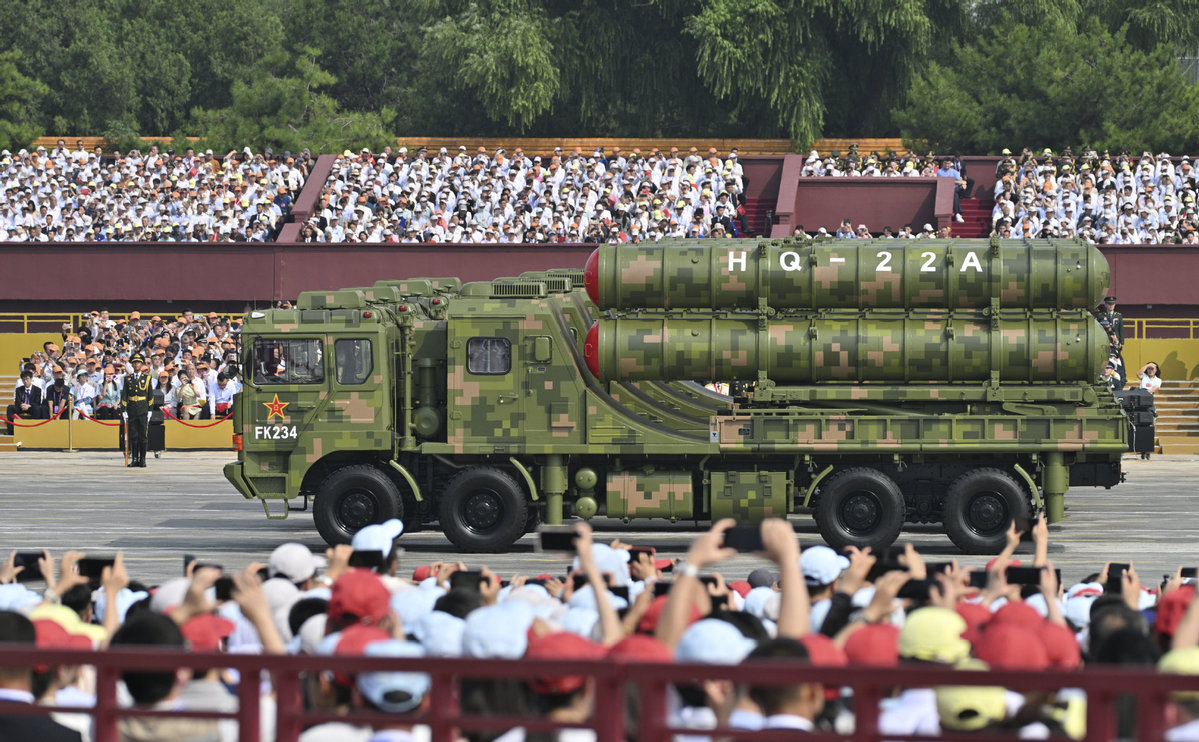
According to Zhang Xuefeng, a military hardware observer and retired PLA officer, the HQ-11, HQ-20, and HQ-22A are primarily tasked with engaging with conventional threats, and can effectively intercept fixed-wing aircraft, drones, cruise missiles, and even short- and medium-range ballistic missiles.
Meanwhile, the HQ-9C is fielded to protect key assets from incoming planes and can also perform terminal low-altitude missile interception tasks within the atmosphere. Its interception altitude is expected to be several tens of kilometers, he said.
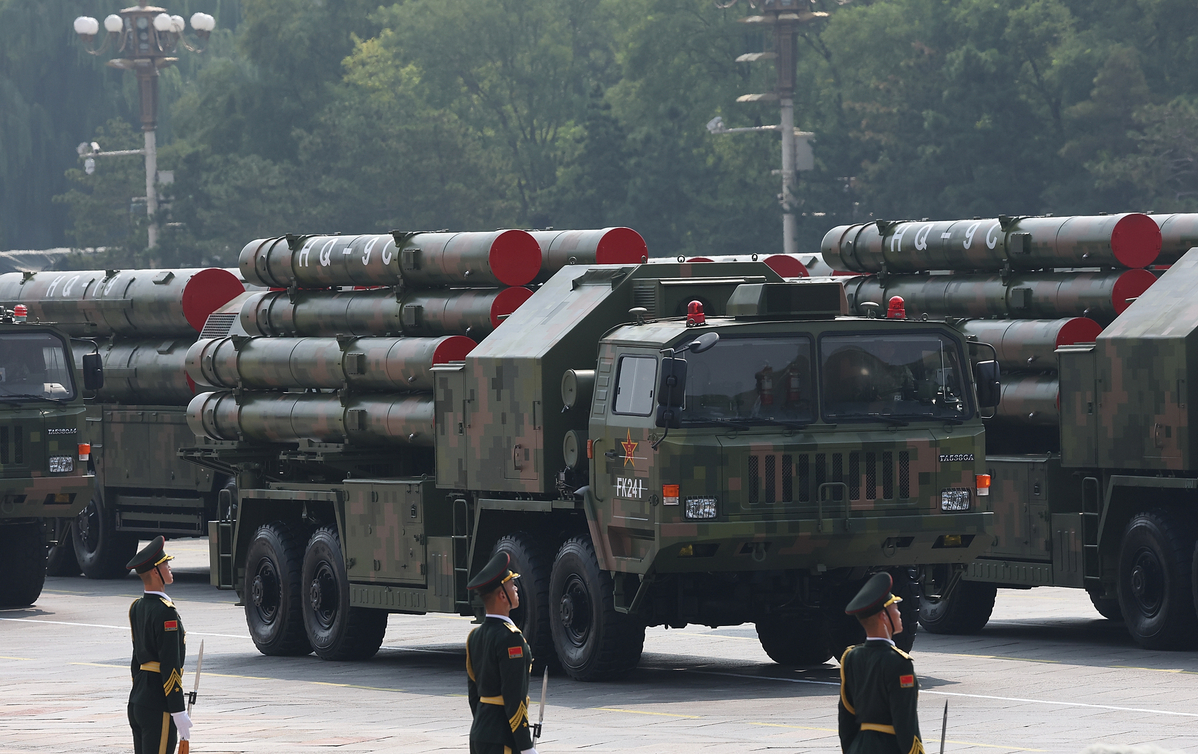
The HQ-19, unveiled for the first time in November 2024, has been designed for regional protection against ballistic missiles at the high-altitude terminal phase, characterized by a large coverage and strong countermeasures. These traits make it a backbone equipment for China's homeland air defense and missile interception operations, according to Zhang.
"The combination of the HQ-9 series and the HQ-19 will form a powerful, multi-layer network to keep our important assets safe from threats from air and exo-atmosphere," the observer noted.

Wang Yanan, chief editor of Aerospace Knowledge magazine, said that in addition to conventional ballistic missiles, the HQ-19 is able to defend against hypersonic glide vehicle weapons that boast extremely fast speeds and supreme agility. As a cutting-edge strike hardware, the hypersonic glide vehicle weapon is virtually impossible to intercept by previous air-defense missiles and poses significant threat to high-value assets.
The largest surface-to-air missile system China has ever shown, the HQ-29 is likely a mid-course interceptor designed to engage threats outside the Earth's atmosphere.
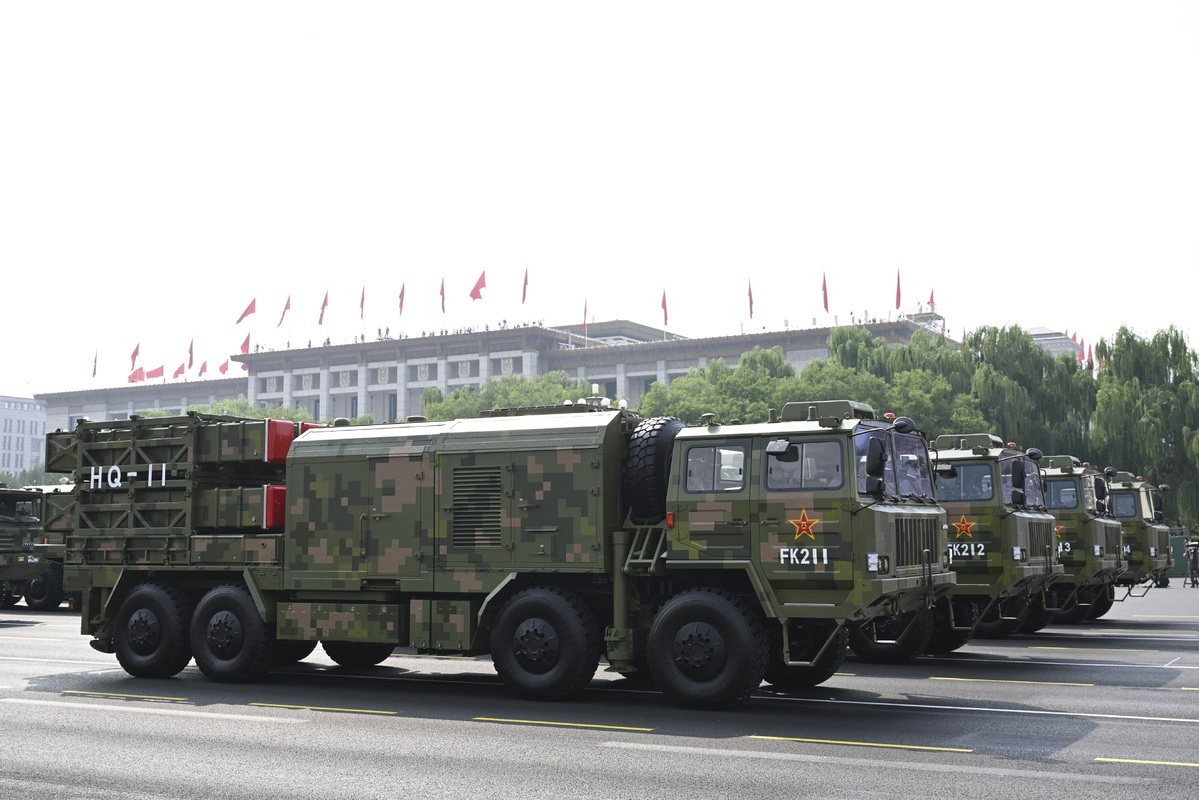
What appeared in the parade were six-axle twin-canister mobile launch vehicles in the system, which is also likely to have at least one integrated radar/command vehicle for each unit.
Analysts have pointed to its large-diameter launch canisters and dual-missile configuration as possible indicators of a design meant to boost interception odds against fast and maneuvering ballistic targets.
